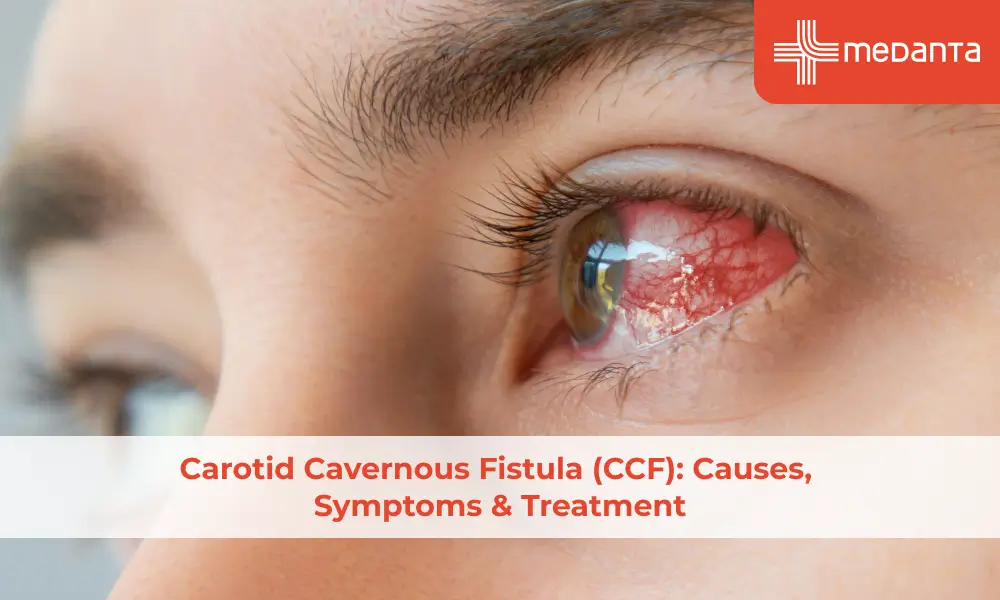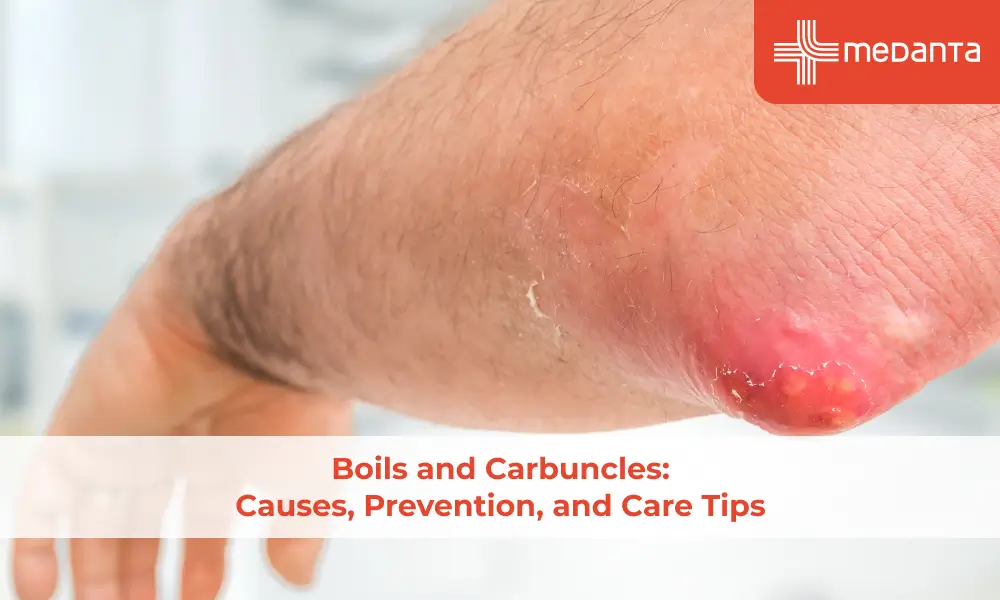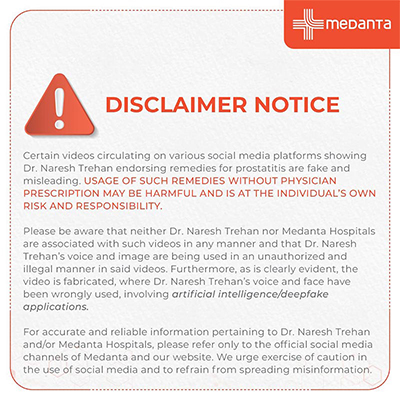Heat Stroke vs. Heat Exhaustion: Symptoms & First Aid

TABLE OF CONTENTS
Your body temperature above 104°F (40°C) leads to heat stroke. This dangerous condition can damage your brain, heart, kidneys, and muscles.
The body gradually develops heat exhaustion as it loses too much water and salt through sweating. You might feel tired and dizzy and get headaches, along with excessive sweating and cramps. Heat stroke needs immediate medical care and can turn fatal without treatment within 30 minutes.
Heat exhaustion can turn into heat stroke without quick treatment. The risk affects both young, healthy people and older adults, especially during prolonged exposure to high temperatures, physical activity in hot weather, or taking some medicines like diuretics and antihistamines.
With proper care, recovery from heat exhaustion takes about 30 minutes. You could save someone's life by spotting these signs early and giving the right first aid.
Heat Stroke vs Heat Exhaustion
Heat-related ailments range from mild to severe, with heat exhaustion and heat stroke showing different severity levels. These differences help people identify when someone needs urgent medical care.
Your body experiences heat exhaustion after losing too much water and salt through sweating. Body temperature rises between 100°F (38°C) and 104°F (40°C). People remain aware of their surroundings but might feel confused temporarily.
Heat stroke poses a true medical emergency with body temperatures reaching 104°F (40°C) or higher. Vital organs can suffer damage without prompt treatment.
These conditions show distinct symptoms:
Heat Exhaustion Symptoms:
Excessive sweating with pale, cool, clammy skin
Dizziness and faintness
Fatigue and weakness
Headache and muscle cramps
Rapid but weak pulse
Rapid, shallow breathing
Heat Stroke Symptoms:
Body temperature above 104°F (40°C)
Hot, dry skin (in non-exertional heat stroke) or excessive sweating (in exertional heat stroke)
Confusion, agitation, or slurred speech
Seizures or hallucinations
Racing heartbeat
Lack of sweating despite feeling hot
Flushed skin
Loss of consciousness
Risk factors for both conditions include:
Age (children under four and adults over 65 face higher risks)
Taking certain medications for blood pressure or heart conditions
Obesity (your body retains more heat)
Sudden temperature changes
Dehydration or alcohol consumption
People need immediate cooling measures for heat exhaustion. The condition can progress faster to heat stroke, which has a high fatality rate and needs emergency medical intervention. The type of care needed depends on identifying which condition someone experiences.
First Aid and Treatment Options
Quick action in a heat-related emergency could save someone's life. Cooling the body faster within 30 minutes after heat stroke starts can lower death rates from over 50% to less than 5%.
First Aid for Heat Exhaustion:
Someone showing signs of heat exhaustion needs immediate help:
Get them to a cooler spot (shade or air-conditioning)
Take off extra clothing, especially tight clothes
Let them slowly drink cold water or sports drinks (no alcohol or caffeine)
Put their feet up while they rest
Put cool, wet towels on their skin or help them take a cool shower
Set up fans to move air around them
People usually recover from heat exhaustion within 30 minutes of treatment. Notwithstanding that, keep watching them and get medical help if their condition gets worse or doesn't improve within an hour.
First Aid for Heat Stroke:
Heat stroke is a medical emergency. Call the emergency helpline right away and start cooling the person:
Get them to a cool place
Take their clothes off
Cool them down quickly using one of these methods:
Put them in cold water or an ice bath (the quickest way)
Put ice packs on their neck, armpits, groin, and back
Cover them with cool, wet sheets and fan them
Spray cool water on them while fanning
Keep cooling them until their temperature drops to about 39°C (102°F) or medical help arrives.
Hospital Treatment:
Medical teams at the hospital might use other cooling methods:
Evaporative cooling (misting with water and blowing air)
Cold fluids through IV
Cooling blankets
Medicine to stop shivering that can make body heat rise
Doctors check for organ damage after the patient stabilises. On top of that, patients need to watch for at least 24-48 hours since body temperature can become unstable after heat stroke.
Rest for two days before doing any hard physical activity after heat exhaustion. Ask your doctor about ways to stay safe if your job keeps you in the heat.
How to Prevent Heat-related Illnesses
By taking action early, you can reduce your risk of heat exhaustion and heat stroke. Your body's response to heat and proper planning play key roles in staying safe during hot weather.
Stay hydrated before, during, and after heat exposure
Your body loses water through sweating. This ranges from 500ml in cool environments to 10 litres during exercise in hot conditions. Proper hydration helps you stay safe:
Don't wait to feel thirsty—you're already dehydrated by then
Drink one cup (240ml) of water every 15-20 minutes while working in the heat
Keep water with you during outdoor activities
Your urine colour tells the story—pale means you're well-hydrated
Think about drinks with electrolytes after heavy sweating to replace lost salts
Choose appropriate clothing
Your choice of clothes affects your body's heat management by a lot:
Pick lightweight, loose-fitting, light-coloured clothes that reflect heat instead of soaking it up
Go for breathable fabrics like cotton & linen that let sweat evaporate
A wide-brimmed hat shields your face & neck from direct sun
Clothes with UPF ratings give you extra sun protection
Plan activities wisely
Smart timing and preparation make a big difference:
Do outdoor activities during cooler times (early morning or evening)
Rest often in shaded spots
Cool down with wet towels around your neck
Look after each other—check on vulnerable people regularly
Cars become deadly hot—temperatures jump 20°F (11°C) in just 10 minutes
Remember that extreme heat affects each person differently. Extra care helps protect children, older adults, pregnant women, and people with certain medical conditions.
Conclusion
Hot weather brings serious health risks from heat-related illnesses. Heat exhaustion works as an early warning signal, but heat stroke needs immediate medical care. These conditions differ in how dangerous they are. Heat exhaustion makes you tired and sweat too much. Heat stroke causes confusion and seizures and might turn fatal without treatment.
Quick symptom recognition can save lives. With proper care, people with heat exhaustion bounce back in 30 minutes. Heat stroke is more urgent—emergency cooling must happen within 30 minutes to reduce death rates. Fast action makes all the difference.
The best way to handle heat-related illnesses is to prevent them. Keep drinking water before you feel thirsty. Wear clothes that fit loosely. Do outdoor activities when it's cooler. Let your body slowly get used to hot weather. Kids, older adults, and anyone on medication should be extra careful in the heat.
This knowledge gives everyone the ability to stay safe and help others in extreme heat. Although these illnesses can be dangerous, they respond well to prevention and quick treatment. Simple preventive steps keep everyone protected as temperatures climb.
FAQs
What are the key differences between heat exhaustion and heat stroke?
Heat exhaustion involves excessive sweating, fatigue, and a body temperature between 38°C and 40°C. Heat stroke is more severe, with a body temperature above 40°C, confusion, and potentially loss of consciousness. Heat stroke is a medical emergency requiring immediate attention.
How can I quickly treat heat exhaustion?
Move to a cool area, remove unnecessary clothing, sip cold water or sports drinks, and apply cool, wet towels to the skin. Rest with feet elevated and use fans to increase air circulation. With these measures, most people recover within 30 minutes.
What immediate actions should I take for someone experiencing heat stroke?
Call emergency services immediately. While waiting, move the person to a cool area, remove outer clothing, and cool them rapidly using methods like immersion in cold water, applying ice packs, or wrapping in cool, wet sheets while fanning them.
How can I prevent heat-related illnesses?
Stay hydrated, wear lightweight & loose-fitting clothing, plan activities during cooler parts of the day, and take regular breaks in shaded areas. Gradually acclimatise to hot environments over 1-2 weeks for better heat tolerance.
Who is at higher risk for heat-related illnesses?
Children under 4, adults over 65, pregnant women, and individuals with certain medical conditions are at higher risk. People taking medications for blood pressure or heart conditions, those who are obese, and individuals who consume alcohol are also more susceptible to heat-related illnesses.





